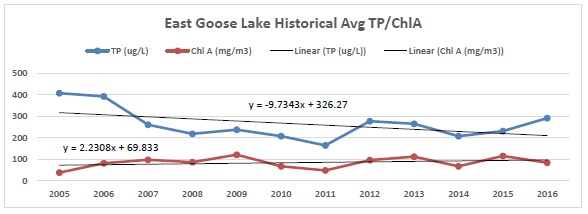Goose Lake Fish Survey Data
In early September, 2017, VLAWMO contracted with Blue Water Science to complete a fish survey of Goose Lake. While water sampling is a valuable tool to track water quality, its more of a snapshot. Fish surveys (biotic surveys) such as this give us a look at a long-term trend in the water quality. What's living in the lake? What challenges do these animals face? What does this say about the lake and how it can be improved?
Background:
In 2013 VLAWMO removed the then astounding numbers of bullhead from Goose Lake. The plan was to revisit the lake with another study in a few years. This year's survey is the follow-up to the 2015 bullhead removal and shows that the removal was effective, as the data reports very small numbers of bullhead. Rough fish such as bullhead hinder water quality through bottom feeding habits that constantly stir up sediment and nutrients. With Goose Lake's unfortunate history of being used as a wastewater dumping site in the 50's, there's still a large amount of nutrients nestled at the lake bottom. This is referred to as internal loading. Now in comparison, the data currently shows that bullhead numbers have dramatically dropped. This is assuring in terms of the greater effort for lake improvements, as one of the many pieces to the clean water puzzle is no longer a concern. A balance of rough and game fish that's diverse in sizes and age is more conducive to clean water and a balanced, resilient lake.
Analysis:
Initial data from this year's survey indicate that the lake conditions aren't affecting the fish in the lake - which is a good sign. Largemouth Bass are also present as a top predator, which supports the lake's progress towards balance and resilience. However, crappie are currently most abundant. For future surveys, VLAWMO will observe if bass balance out the high crappie population. Continued progress toward a balanced, diverse fish population will help minimize the impact events that can harm aquatic life. For example, both winter and summer can bring fish kills due to ice and nutrient imbalances that limit oxygen that fish need to survive. As the fish improve, the rest of the mystery comes from water monitoring data. Overall, we see a downward trend in Goose Lake's phosphorus levels. But the lake is still above state standards for nutrients such as phosphorus and chlorophyll-A, which means the mission isn't complete. See historical graph of Goose Lake below.
Rough fish removal at Goose Lake in 2013.

Planning for Progress:
Keeping the lake moving in this direction and not backtracking means addressing the other puzzle pieces for the lake's impairment. Stormwater runoff, degraded or turfgrass shorelines and drainage ditches, as well as internal historic nutrient loading (Goose Lake's history of being a wastewater dump in the '50's) all contribute to the lake's impairment.
The good news is that residents and businesses can help! To improve the surrounding landscape draining into the lake, partnerships are key. VLAWMO has funding for cost-share programs for raingardens and shoreline improvements, both of which reduce the impact of stormwater runoff on water quality. Properties on and around Goose Lake and nearby water bodies that drain into it, such as Wood Lake/Oak Knoll Pond, are eligible for funding and can receive a free on-site consultation to plan a project that works best. See our grants webpage here.
See the fish survey data here. Final report is pending.

